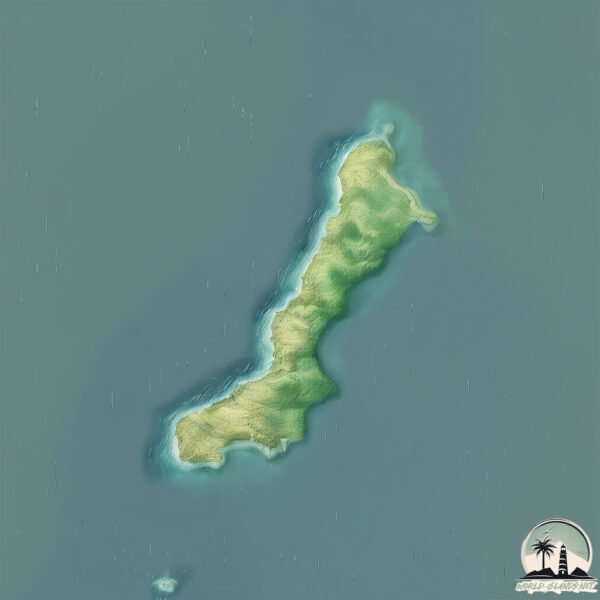Welcome to Prime Seal , a Temperate island in the Bass Strait, part of the majestic Pacific Ocean. This guide offers a comprehensive overview of what makes Prime Seal unique – from its geography and climate to its population, infrastructure, and beyond. Dive into the details:
Geography and size of Prime Seal
Size: 13.2 km²Coastline: 38.3 kmOcean: Pacific OceanSea: Bass StraitContinent: Oceania
Prime Seal is a Medium Island spanning 13 km² with a coastline of 38 km.
Archipel: –
Tectonic Plate: Australia – A major tectonic plate covering Australia, New Zealand, and parts of the Indian and Pacific Oceans, known for its relative stability and occasional seismic activity.
The geographic heart of the island is pinpointed at these coordinates:
Climate and weather of Prime Seal
Climate Zone: TemperateClimate Details: Temperate Oceanic ClimateTemperature: Warm Summer
Climate Characteristics: Known for its moderate year-round temperatures with ample rainfall and no dry season. Warm summers are characteristic.
Topography and nature of Prime Seal
Timezone: UTC+10:00Timezone places: Australia/SydneyMax. Elevation: 115 m Mean Elevation: 50 mVegetation: Sparse Vegetation with Trees/ShrubsTree Coverage: 61%
The mean elevation is 50 m. The highest elevation on the island reaches approximately 115 meters above sea level. The island is characterized by Plains: Flat, low-lying lands characterized by a maximum elevation of up to 200 meters. On islands, plains are typically coastal lowlands or central flat areas.
Dominating Vegetation: Sparse Vegetation with Trees/Shrubs
Vegetation: 6 vegetation zones – Very Highly Diverse Island
Infrastructure and Travelling to Prime Seal
Does the island have a public airport? no .
Does the island have a major port? no .
The mean population of Prime Seal is 0 per km². Prime Seal is Uninhabited. The island belongs to Australia .
Continuing your journey, Badger is the next notable island, situated merely km away.
A3. EAST BASS STRAIT CRUISING: Blowing a dog off a chain - Prime Seal Island
Gusty night weather causes panic that Leearcki maybe dragging anchor towards rocks at Spit Point, so after a tedious night watch, ...
A3. EAST BASS STRAIT CRUISING: Blowing a dog off a chain - Prime Seal Island
Gusty night weather causes panic that Leearcki maybe dragging anchor ...
Gusty night weather causes panic that Leearcki maybe dragging anchor towards rocks at Spit Point, so after a tedious night watch, ...
Prime Seal Island
Prime Seal Island in the Furneaux Group has pristine beaches, rock art ...
Prime Seal Island in the Furneaux Group has pristine beaches, rock art and walking. Offers good Shelter from the west. Anchor ...
Granny Smith visits Prime Seal Island in the Furneaux Group, Tasmania
North East coast of Prime Seal Island provides good holding and good ...
North East coast of Prime Seal Island provides good holding and good shelter from the prevailing westerly winds in Bass Strait.
Australia is classified as Developed region: nonG7: Developed economies outside of the Group of Seven, characterized by high income and advanced economic structures. The level of income is High income: OECD.
News – Latest Updates and Headlines from Prime Seal
Stay informed with the most recent news and important headlines from Prime Seal. Here’s a roundup of the latest developments.
Loading...
Please note: The data used here has been primarily extracted from satellite readings. Deviations from exact values may occur, particularly regarding the height of elevations and population density. Land area and coastline measurements refer to average values at mean high tide.

